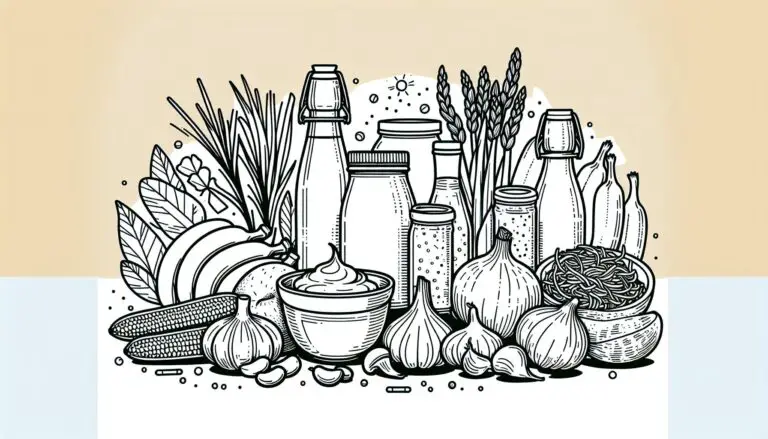Battling mold toxicity can feel like an uphill battle, but what if you could arm yourself with nature’s own weapons? Essential oils, with their potent antifungal properties, offer a holistic approach to healing that’s both gentle and effective. In this text, you’ll discover how these natural remedies can combat mold toxicity and restore your health. From tea tree to clove, learn which essential oils pack the biggest punch against mold and how to safely incorporate them into your healing regimen. Get ready to breathe easier and reclaim your well-being with the power of essential oils.
Understanding Mold Toxicity
Mold toxicity, often unrecognized, can significantly impact your health and well-being. Mold consists of tiny fungi that thrive in moist environments. When they reproduce, they release spores into the air, which can be inhaled, leading to potential health issues. It’s vital to understand the environments that encourage mold growth, primarily areas with high humidity like bathrooms, kitchens, and basements.
Symptoms of mold exposure vary widely and can mimic other health conditions, making it tricky to diagnose. Common signs include:
- Chronic coughing and sneezing
- Irritation of the eyes, nose, and throat
- Skin rashes
- Headaches
- Fatigue
- Difficulty concentrating
Long-term exposure can lead to more severe health problems, such as respiratory infections, asthma, and immune system disorders. It’s essential to monitor your living or working environment for signs of mold to protect your health.
Reducing humidity levels, ensuring proper ventilation, and promptly addressing water leaks are practical steps you can take to prevent mold growth. But, when mold becomes a problem, conventional cleaning methods aren’t always sufficient or safe. That’s where the power of essential oils comes into play.
The antifungal properties of certain essential oils make them an effective, natural solution for combating mold. Unlike harsh chemical solutions, essential oils offer a gentle yet potent method to deal with mold toxicity. With their ability to kill mold spores and deter regrowth, incorporating these oils into your cleaning regimen can not only eliminate existing mold but also help maintain a healthier living environment.
The Power of Essential Oils

When you’re dealing with mold toxicity, the idea is to not just remove the mold, but to also find a solution that doesn’t introduce more toxins into your environment. This is where the natural potency of essential oils comes into play. Their powerful antifungal properties make them an ideal choice for battling mold spores and improving the air quality of your home.
Tea Tree Oil, widely recognized for its antiseptic properties, is a frontline warrior against mold. Its strong fungicide ability helps in killing mold spores on contact, making it a go-to solution for immediate and effective mold treatment. A study has shown that a simple spray made from tea tree oil and water can drastically reduce mold levels in humid areas, such as bathrooms and kitchens.
Another powerhouse, Clove Oil, stands out for its high eugenol content, a compound known for its robust antifungal and antimicrobial properties. Clove oil is particularly effective against black mold, which can be a challenge to eradicate with conventional methods.
For a broader spectrum action, Cinnamon Oil not only kills mold spores but also prevents their regrowth. This oil is especially useful in areas where food is stored, as it doubles as a preservative, keeping both mold and bacteria at bay.
Integrating these essential oils into your cleaning routine doesn’t require complex tools or procedures. A simple diffuser, a spray bottle mixed with water, or even adding a few drops to your laundry can introduce their mold-fighting benefits into various aspects of your home.
Remember, while essential oils are natural, their concentrated power means they should be used with a degree of caution. Always perform a patch test on surfaces before full application and consider diluting the oils to mitigate any potential skin sensitivities or respiratory discomfort.
By embracing the holistic healing powers of essential oils, you’re not just treating mold toxicity—you’re also investing in the health and wellness of your living space.
Top Essential Oils for Combating Mold

When tackling mold toxicity, incorporating essential oils into your regimen can offer a potent, natural solution. Mold spores not only compromise indoor air quality but can lead to health issues over time. By selecting the right essential oils, you’re leveraging nature’s own arsenal against mold. Here’s a breakdown of the top oils you should consider.
Tea Tree Oil stands out for its robust antifungal and antibacterial properties. It’s particularly effective in humid environments where mold thrives. A few drops of tea tree oil in a diffuser can purify the air, while a diluted solution can clean surfaces and prevent mold from taking hold.
Clove Oil is renowned for its strength against black mold, one of the more stubborn forms to eradicate. Its eugenol content is a powerful antifungal agent, making it a reliable choice for mold-infested areas. Mixing clove oil with water creates a potent spray for surfaces affected by mold.
Cinnamon Oil goes beyond killing mold spores; it also inhibits their growth. Including cinnamon oil in your cleaning regime not only addresses current mold issues but also works as a preventative measure. Its pleasant scent is an added bonus, leaving your space smelling fresh.
Thyme Oil, with its strong antimicrobial properties, is effective against mold and mildew. It’s especially useful in bathroom and kitchen areas where dampness is more prevalent. Thyme oil, when used in a diffuser, can also help in purifying the air.
Incorporating these essential oils into your cleaning and air purification routines can drastically reduce mold levels and improve your home’s overall air quality. Remember to use them in the recommended dilution ratios, as their concentrated forms are potent. By leveraging these natural, powerful solutions, you’re not just combatting mold but also promoting a healthier living space.
Safe Ways to Use Essential Oils for Mold Toxicity

When integrating essential oils into your battle against mold toxicity, it’s crucial to prioritize safety and effectiveness. Knowing how and when to use these potent oils can drastically enhance their benefits without risking your health or home environment.
Direct Application and Diffusion
- Dilution is Key: Always dilute essential oils with a carrier oil, such as coconut or jojoba oil, before any direct application. This prevents skin irritation. A general guideline is to maintain a dilution ratio of 1-2% essential oil in carrier oil.
- Diffuse with Care: Using an essential oil diffuser is an excellent way to purify the air in your home. But, limit diffusion to 30-45 minute intervals with ample breaks in between to avoid overexposure.
Specific Guidelines for Mold Toxicity
- Targeted Surfaces: Apply diluted tea tree or clove oil directly onto mold-prone surfaces. These oils not only repel mold but can hinder its growth on walls and other surfaces.
- Preventive Sprays: Creating a preventive spray with diluted essential oils can help you maintain a mold-free environment. Mix a few drops of your chosen essential oil with water and a bit of white vinegar, then spray lightly on surfaces before wiping them down.
- Patch Test: Before using any essential oil blend on larger areas of your skin, perform a patch test to ensure you’re not allergic.
- Ventilation: Ensure your space is well-ventilated while using essential oils, especially in high concentrations. This helps in preventing respiratory discomfort.
- Child and Pet Safety: Some essential oils can be harmful to children and pets. Research and ensure the oils you plan to use are safe for everyone in your household.
By following these guidelines, you can safely harness the powerful antifungal and antibacterial properties of essential oils to fight mold toxicity. Investment in quality essential oils and adherence to safe usage protocols can transform your living space into a healthier environment.
Incorporating Essential Oils into Your Healing Routine
When you’re tackling mold toxicity, integrating essential oils into your daily routine can significantly amplify your healing journey. Essential oils, known for their antifungal and antibacterial properties, offer a holistic approach to purifying your living environment and supporting your body’s health. Here’s how you can seamlessly make them a part of your life.
Start with the Basics: Safety First
Before diving into specific oils, it’s crucial to understand how to use them safely. Always dilute essential oils with a carrier oil, such as coconut or jojoba oil, before applying directly to the skin. This step is vital to prevent any adverse reactions. Also, when using essential oils in a diffuser, make sure the room is well-ventilated, especially if pets or children are present.
Choose Your Oils Wisely
Not all essential oils are created equal when it comes to combating mold. Research suggests that certain oils have more potent antifungal properties:
- Tea Tree Oil: Known for its robust antifungal capabilities.
- Clove Oil: Highly effective against a wide range of molds.
- Thyme Oil: Targets the toughest of mold spores.
Incorporating a blend or rotating these oils in your daily routine can maximize their effectiveness.
Creative Applications
- DIY Cleaning Solutions: Add a few drops of your chosen essential oils into a spray bottle filled with water and vinegar. Use this blend to clean mold-prone surfaces regularly.
- Air Purification: Use an essential oil diffuser to help purify the air in your home. A daily diffusion routine can help keep airborne mold spores at bay.
- Direct Application: For personal care, mix essential oils with a carrier oil and apply to your feet or other non-sensitive areas. This method can help support your body’s resistance to mold.
Routine Matters
Building a routine is key. Whether it’s a morning purification ritual with your diffuser or a weekly deep-clean of your living spaces with your DIY solutions, consistency is what will drive results. Remember, small, daily actions compound over time, leading to a healthier living environment and a stronger, more resilient you.
Conclusion
Embracing essential oils offers a holistic path toward mitigating mold toxicity’s impact on your health. By integrating oils like Tea Tree, Clove, and Thyme into your daily regimen—whether through DIY cleaning concoctions, air purification, or direct skin application—you’re taking a significant step towards a mold-free environment. Remember, consistency is key. A dedicated approach to using these natural remedies can transform your living space into a sanctuary of wellness, safeguarding your well-being against the invisible threats posed by mold. So, start today, and let the natural potency of essential oils fortify your home and health against mold toxicity.






